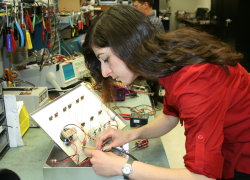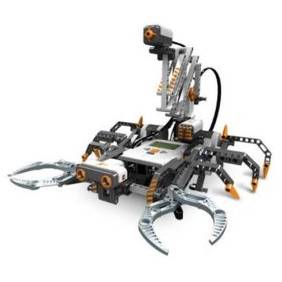Question/Answer: How Do We Improve Computer Science’s Image?
 See Wechie’s Comment of 8/21: There seems to be hundreds of separate initiatives to encourage girls to study computer science but there remains an image problem. How can we get an industry wide campaign going to improve the image of computing?
See Wechie’s Comment of 8/21: There seems to be hundreds of separate initiatives to encourage girls to study computer science but there remains an image problem. How can we get an industry wide campaign going to improve the image of computing?
Yes, Wechie you are correct, there is a huge image problem. American Association of University Women’s Study, Tech Savvy: Educating Girls in the New Computer Age (2000) which you can download for free, documents the image problem among girls and many other studies have gone on to replicate these findings.
I would like to see one of the major computer giants – such as Apple or Electronic Arts – use their marketing savvy and department to team with a nonprofit (such as us) to develop a multi-media marketing campaign (YouTube, facebook, TV commercials, Posters) that could create a more positive image of computer science for women and girls (and men!).
Of course, we also advocate that schools help to change the image by showing female role models in posters and career videos — our womentechstore has many resources to help with this. I’ve personally previewed the videos we have and they are extremely well done. (Shameless plug). Now if we could combine this with a national campaign by industry leaders this could be the push that’s needed.

 Recruiting 101: Have you visited the career links section of
Recruiting 101: Have you visited the career links section of  Recruiting 101: The key to recruiting women and girls in a field in which they are under-represented is female role models. You already know their numbers are small, so where do you find these women? IWITTS did a survey in 2005 and found that among educators word of mouth was the leading strategy (86%), followed by connecting with women on the street (66%). Respondents also found doing a newspaper story on their program effective! In addition, I’d recommend putting flyers up in your community saying you are looking for female role models in specific occupations.
Recruiting 101: The key to recruiting women and girls in a field in which they are under-represented is female role models. You already know their numbers are small, so where do you find these women? IWITTS did a survey in 2005 and found that among educators word of mouth was the leading strategy (86%), followed by connecting with women on the street (66%). Respondents also found doing a newspaper story on their program effective! In addition, I’d recommend putting flyers up in your community saying you are looking for female role models in specific occupations.
 I am happy to see that U Mass’s Computer Science (CS) Department added photos of women to its homepage. Out of seven photos–two now feature women! Unfortunately, the photos of women don’t show them working in the field with equipment as photos 1, 2 and 4 do for the males. The photos now show a woman writing on a board in a classroom setting and two women in an office setting. One of the recommendations IWITTS makes in our WomenTech training is that photos are taken of women working with equipment. Too often women are portrayed in “passive” roles in the workplace while males are in “active” roles.
I am happy to see that U Mass’s Computer Science (CS) Department added photos of women to its homepage. Out of seven photos–two now feature women! Unfortunately, the photos of women don’t show them working in the field with equipment as photos 1, 2 and 4 do for the males. The photos now show a woman writing on a board in a classroom setting and two women in an office setting. One of the recommendations IWITTS makes in our WomenTech training is that photos are taken of women working with equipment. Too often women are portrayed in “passive” roles in the workplace while males are in “active” roles.






Recent Comments